05 Nov Micro Mosaic a Popular Art from the 19th Century
Micro Mosaic
There is something about the miniature, but perfect and complete that gets me every time. And I know I’m not the only one. Is it an adult fascination with dollhouses? Or the desire to control a tiny universe? I don’t know. But Micromosaics have always fascinated me.
MUGHAL & DUTCH: A CULTURAL BRIDGING OF 2 GREAT ARTISTIC TRADITIONS
THE MUGHAL EMPERORS LOVE FOR BEAUTIFUL FLOWERS AND FLORAL DESIGNS
Mosaics have been around from the third century BC, particularly in Ancient Rome, composed of glass and terracotta. However, they came into their own in the Byzantine era, where they adorned the churches. This tradition was continued during the Renaissance, as in the ceiling of St Peter’s Basilica by Michaelangelo.
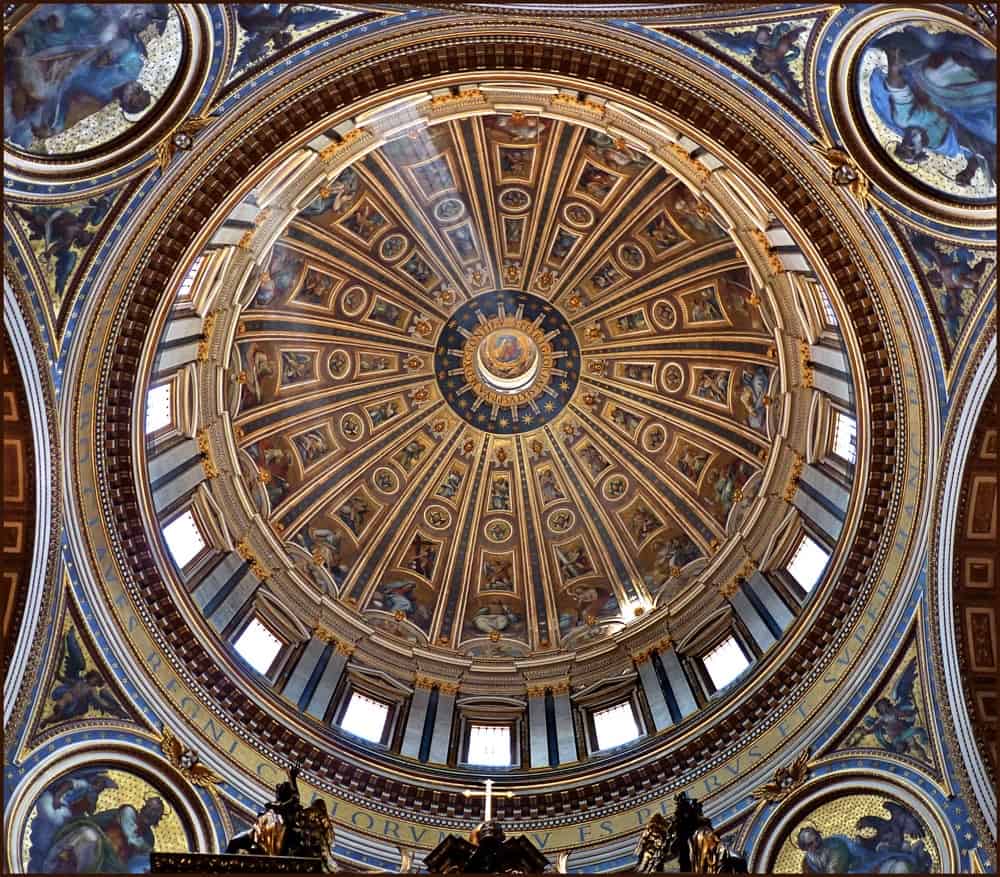
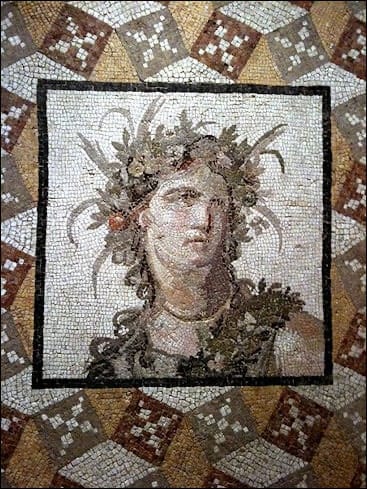
The Roman mosaics
Eventually, the church patronized a body called the Vatican Mosaic Studio. Some of the craftsmen who were part of this guild started experimenting with what we know as micro mosaic, using tiny tesserae to make miniature worlds. However, the term micro mosaic was only coined in the 20th century by Sir Arthur Gilbert, the famous collector. At this stage, these were called Roman mosaics.
Travel on the Continent was considered de rigueur in the 18th and 19th centuries. The micro mosaic became a typical souvenir to take back home, both as pictures and jewelry. Most featured flora and fauna, Roman buildings, and Old Master Paintings.
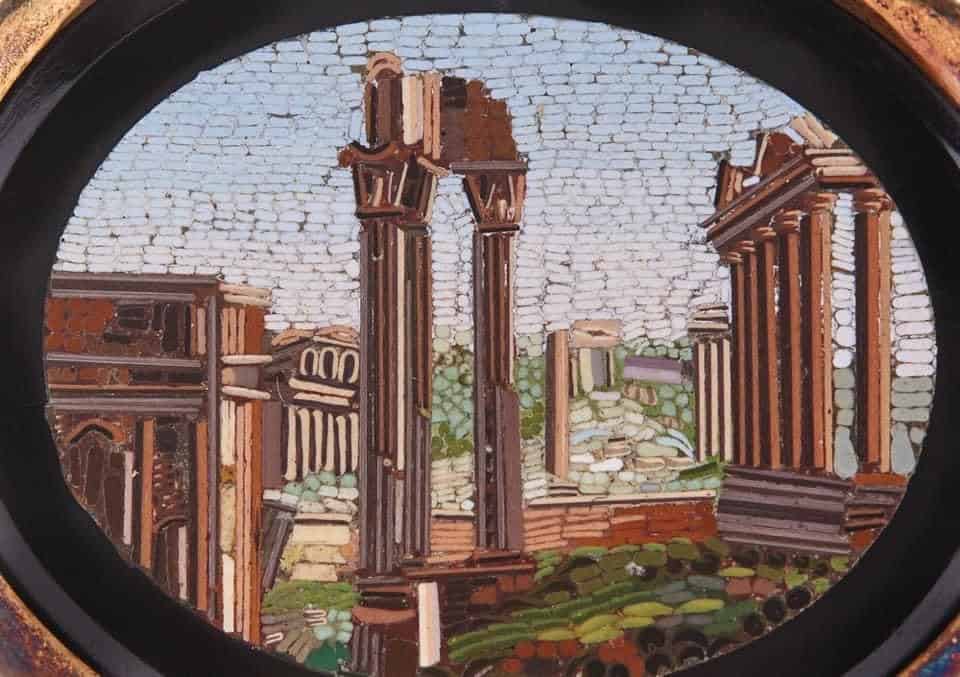
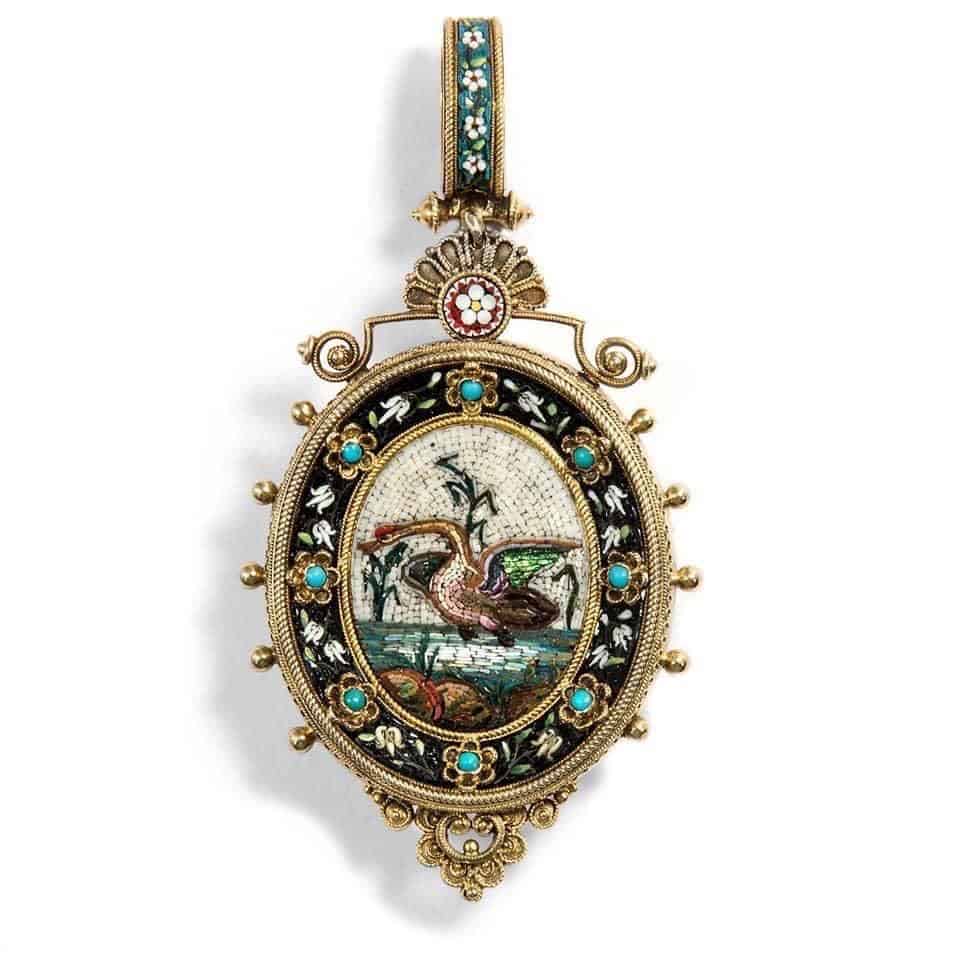

Micro Mosaic work of Giacomo Raffaelli
While most micro mosaic artists were considered artisans and not artists, some were, notably, Giacomo Raffaelli. His micro mosaic version of The Last Supper was commissioned by Napoleon and is today housed in Vienna’s church. Another was Clemente Ciul, whose works are at the LACMA in Los Angeles.
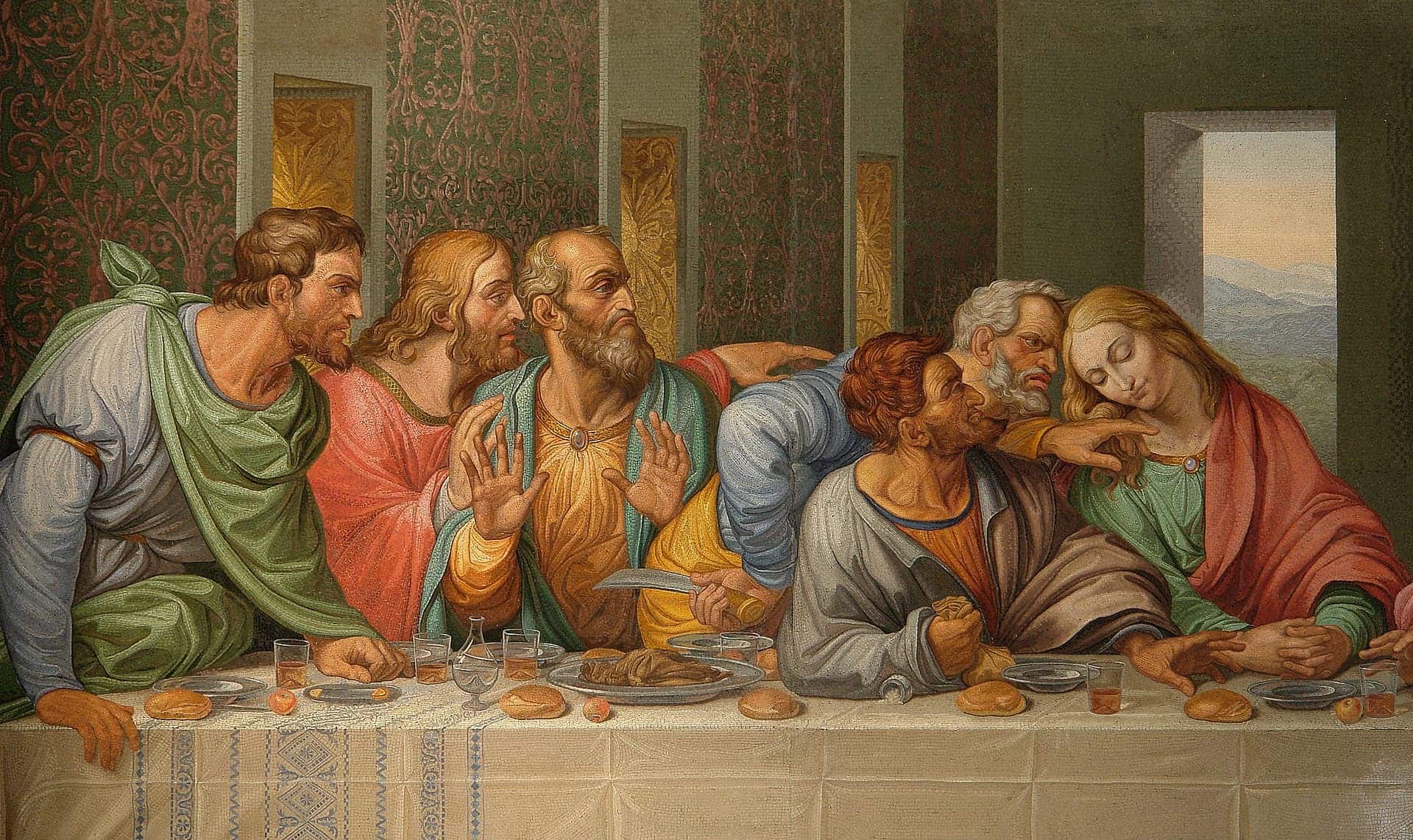
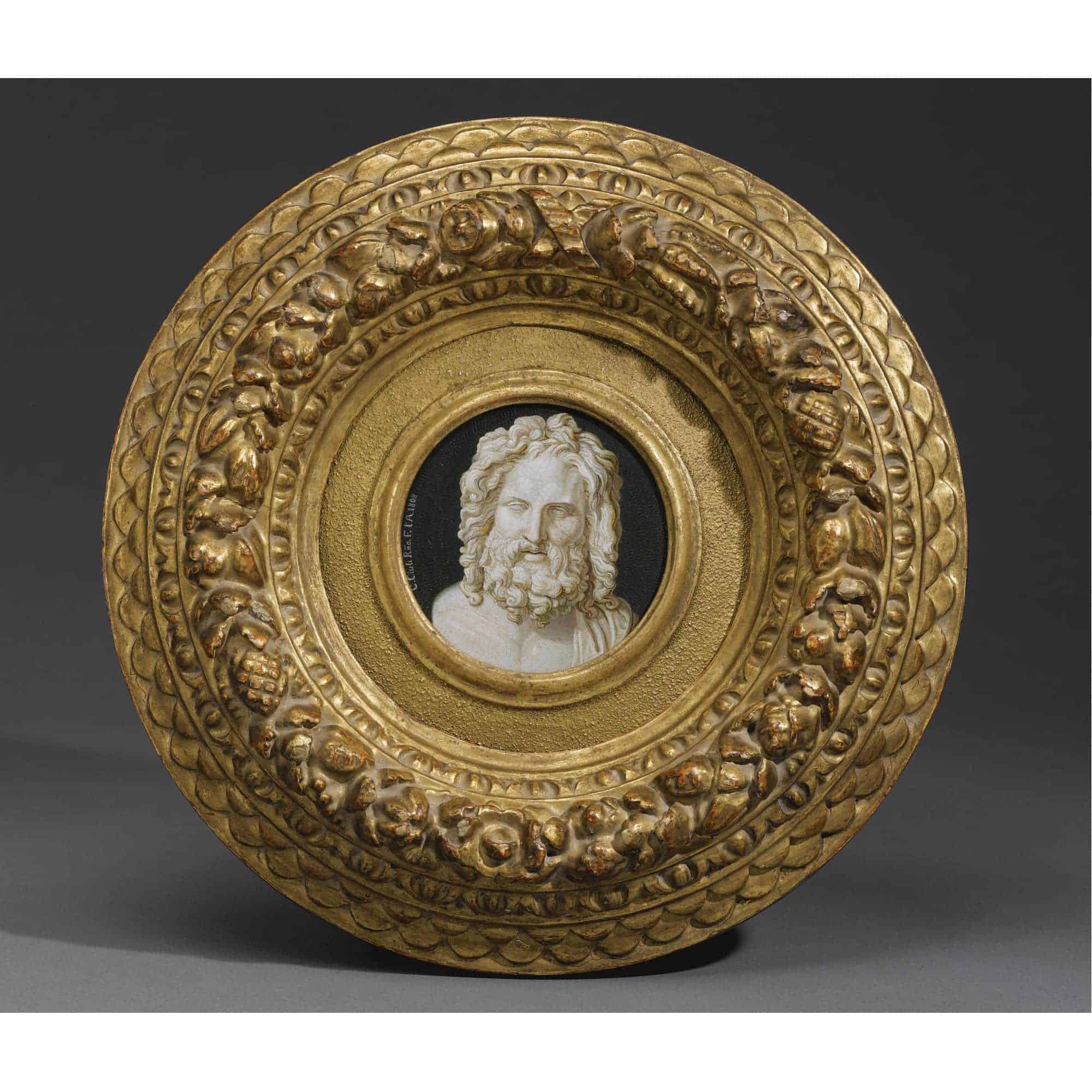
Micromosaics were so popular in the 19th century that the influencers of the time like Empress Josephine and the poet Elizabeth Barrett Browning were known to own jewelry based on the technique. Virtually every traveler on the Continent took back a piece as a gift or souvenir. The most famous jeweler was Castellani, whose eponymous store in Rome was filled with exquisite parures, brooches, and earrings, based on Christian and Byzantine motifs.

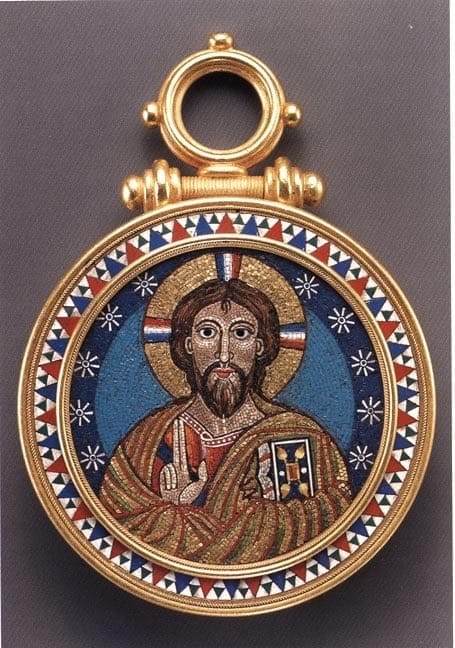


The Process of Creating a Micro Mosaic work is incredibly arduous:
- The primary tool is tesserae. These are mosaic pieces made from glass or enamel in various colors. At this stage, these are called smalto.
- The smalto is pulled into threads called filati (spun enamel) and then cooled.
- It is then cut into minute tesserae and arranged on a copper or gold base to depict the desired scene.
- The tray is filled with mastic or cement upon which the tesserae are placed.
- Coloured wax is filled in the gaps, and the completed picture is polished for luster and finish.
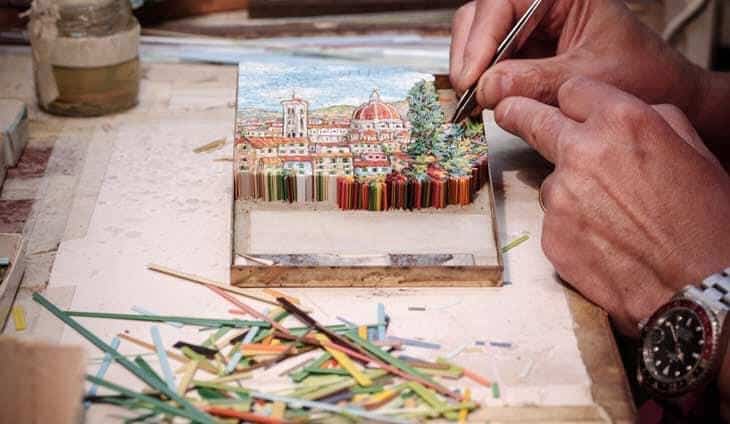
Sadly, the arduous nature of making the micro mosaic proved its doom by the early 20th century, as shortcuts began to be taken by craftsmen, resulting in shoddy work. Besides, the Art Deco movement celebrated the au courant and technological, marking a move away from the classic and antique. Castellani shut shop in 1927, dealing a death blow to the art form.
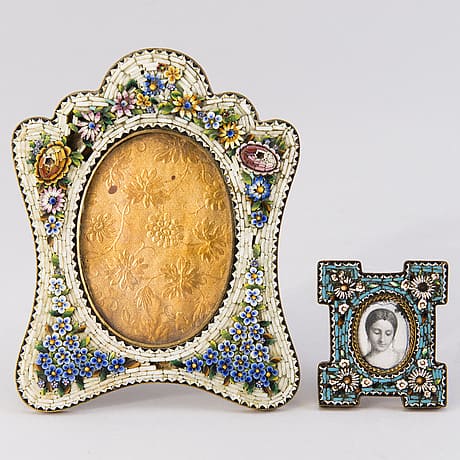
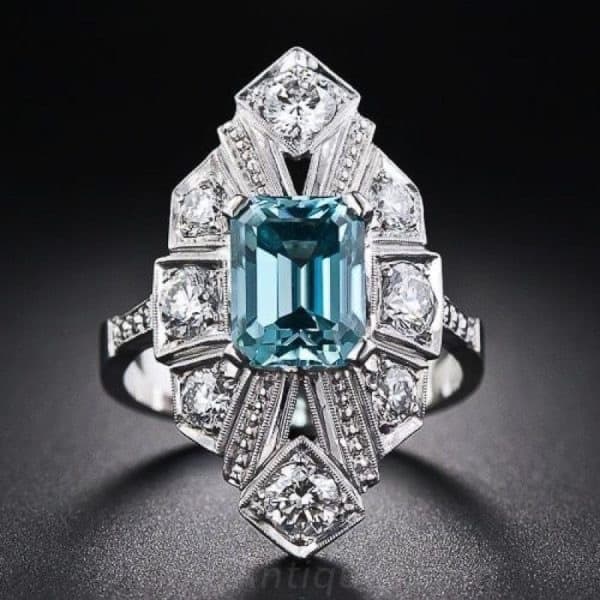
FRENCH ART DECO TEXTILE MOVEMENT’S STRONG INFLUENCE ON DESIGN
MATISSE’S ART AND TEXTILES. HOW TEXTILE STIMULATED HIS CREATIVE POWERS TO A NEW PICTORIAL REALITY
Micromosaic still exists in the hands of a few dedicated artists and as a DIY. The renewed interest in 19th-century artifacts has helped the cause. I hope that this beautiful art will not disappear.
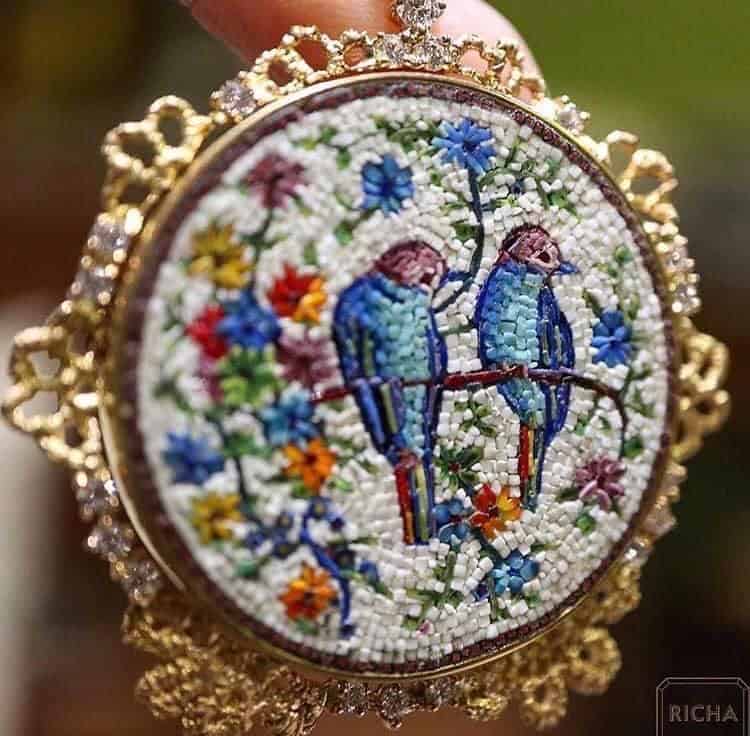






No Comments